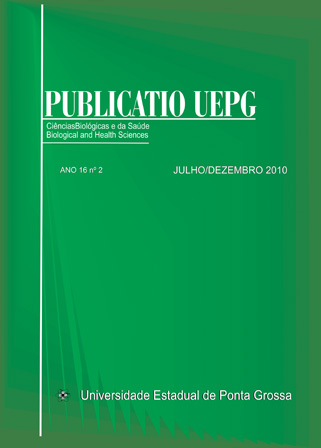MORPHO-ANATOMIC STUDY OF CATUABA COMERCIAL SAMPLES
DOI:
https://doi.org/10.5212/publicatio%20uepg.v16i2.3148Keywords:
Anemopaegma arvense. Microscopy. QuAnemopaegma arvense. Microscopy. Quality control. Trichilia catigua.ality control. Trichilia catigua.Abstract
Anemopaegma arvense and Trichilia catigua (catuaba) are used for their aphrodisiac
and sexual stimulant actions. Microscopic study was undertaken to investigate the
morphology and anatomy of six samples - in powder form (capsules) - , sold in
pharmacies, and seven catuaba's barks sold in street markets in order to identify
the drug and help the development of pharmacognostic parameters of dry and
pulverized material to be used in quality control of these species. It was observed
that A. arvense material and the bark of T. catigua periderm have few layers of
suber and parenchymatic cortex; it was also observed the presence of idioblasts with
druses; secondary xylem and phloem. It was observed ring fi bers that are separate by
parenchyma rays externally; there are rows of prismatic crystals in cells that follow
the fi bers in the xylem and phloem in the sample of T. catigua. The results showed
that the samples sold in the form of dried plant (drug) and samples sold as capsules
(powder form) have similar characteristics to the pattern observed for T. catigua. In
addition, one of the samples showed distinct characteristics from other samples and
patterns evaluated. Microscopy proved to be an effective tool in the identifi cation
of the samples and proved to be an adequate technique for the evaluation of this
material to complement/replace the more advanced techniques of analysis.
Downloads
Downloads
Issue
Section
License

Este obra está licenciado com uma Licença Creative Commons Atribuição 4.0 Internacional.
Esta licença permite que outros distribuam, remixem, adaptem e criem a partir do seu trabalho, mesmo para fins comerciais, desde que lhe atribuam o devido crédito pela criação original. Este posicionamento está de acordo com as recomendações de acesso aberto da Budapest Open Access Initiative (BOAI).


